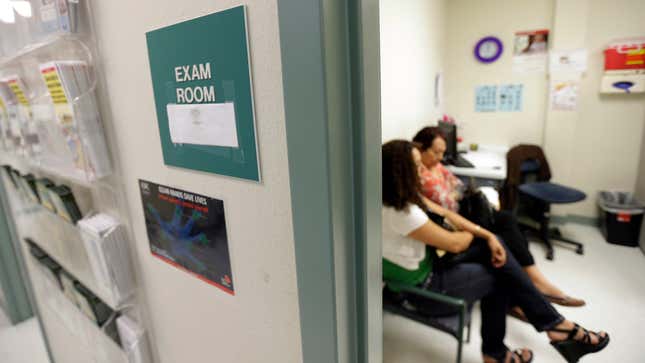

The Mahube-Otwa Community Action Partnership is a nonprofit organization that operates a small network of family planning clinics serving low-income patients in rural Minnesota. Like so many other clinics across the country right now, it withdrew from the Title X family planning program after the Trump administration’s gag rule went into effect, prohibiting providers like Mahube-Otwa from receiving federal funds if they counseled or referred patients for abortion services.
The decision to opt out of the program was painful but straightforward enough, executive director Liz Kuoppala told Jezebel, since staying in the program would have meant rejecting the patient model that anchors the work they do in their communities: “Being client–focused means providing the very best service we can to our clients and not having a politician dictate what sort of services we can provide,” she explained. “So being limited just in order to get a grant is just contrary to who we are and how we operate.”
But the fallout has been chaotic. The loss of funding meant a 50 percent staff reduction, increased expenses around medication and other services, and a difficult tightrope to keep from passing those costs on to patients. They are trying to find alternate funding sources, but “these are very high–poverty counties,” Kuoppala said. “There’s not a lot of resources out there but we’re trying to shake the trees for what we can find.”
Jezebel spoke with Kuoppala and Chandler Esslinger, the organization’s community health coordinator, about navigating an uncertain future with fewer staff on hand and a tighter budget. Our conversation has been condensed and lightly edited for clarity.
JEZEBEL: Can you tell me a little about the work that your organization does?
CHANDLER ESSLINGER: So the day-to-day initiatives that we have really mostly revolve around keeping our clinics open. We have four standing locations, and traditionally almost all of those spaces have been open at least four days a week. We have four other satellite locations, and those are all open once a month.
We have a variety of services that we provide. We have some walk–in services like for STI testing and things like that, but usually we have a nurse in the clinic and, on clinic days, we have a provider in the building and that’s when we’re able to provide more birth control services, pap smears, annual exams, more in-depth consultation. And then we do a variety of different kinds of outreach. Last year we had a very strong initiative to promote the Gardasil vaccination as cancer prevention, and then we also provide a variety of different educations in the community—some with our local schools, some with other local non-profits, some with treatment centers and things like that.
A lot of the communities that we serve have higher rates of poverty—85 percent of the clients we see qualify for our sliding scale services based on their income. And then a large subset of the population that we work with are people who we would consider either underinsured or uninsured—so folks who have high deductible plans where it’s not necessarily feasible for them to go to a clinic and receive the kind of care that they need without some sort of financial assistance. And about 50 percent of the folks we serve travel 10 miles or more for services. And so that’s kind of the group of folks that we’re catching. We know that health care is a very personal experience, and sometimes when people don’t have an experience that is affirming or culturally competent, folks search elsewhere to get care. And so we find ourselves serving a lot of patients who maybe don’t feel fully supported by traditional healthcare systems.
As we decrease hours and decrease flexibility for seeing patients, it really creates hardship
The domestic gag rule had been a rumor for a long time before it became real. When did you all start planning for different outcomes?
-

-

-

-

-

-

-

-

-

-

-

-

-

-

-

-

-

-

-

-

-

-

-

-

-

-

-

-

-

-

-

-

-

-

-

-

-

-

-

-








































